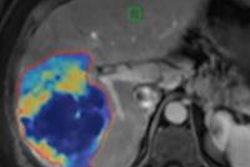Canadian researchers have succeeded in measuring chemotherapy treatment response in mice at the microscopic level using quantitative ultrasound combined with maximum mean discrepancy (MMD) measurements, according to a new study in IEEE Transactions on Medical Imaging.
The study team acquired images with ultrasound spectroscopy and used multiparametric quantitative ultrasound (QUS) spectral maps to analyze them. MMD measurements were employed as a distance criterion to compare prechemotherapy and postchemotherapy images, categorizing the extent of cell death from the treatments into less than or more than 20% and 40% categories.
There were significant differences between the pretreatment and post-treatment groups at different times after chemotherapy, showing the robust ability of the proposed model to detect tumor treatment response noninvasively, wrote Mehrdad Gangeh, PhD, and colleagues from the University of Toronto, Sunnybrook Health Sciences Centre, and the University of Waterloo. The model also worked well for categorizing the level of cell death response in each tumor.
"Quantitative ultrasound methods provide a promising framework that can noninvasively, inexpensively, and quickly be used to assess tumor response to cancer treatment using standard clinical ultrasound equipment," Gangeh and colleagues wrote (IEEE Trans Med Imaging, June 2014, Vol. 33:6, pp. 1390-1400).
Personalized therapy
Personalized cancer therapies are gaining ground over standardized treatments, and by employing faster feedback mechanisms, such therapies can avoid needless or harmful continuation of ineffective cancer treatments, according to the authors.
Individualized treatments need effective monitoring, both at the macroscopic/anatomical and microscopic/cellular levels. Tumor changes can be seen more quickly at the microscopic level, but the science supporting this is newer and the methods may come with a greater potential for side effects, Gangeh and colleagues noted.
A limitation of traditional macroscopic changes is that they can't really be measured beyond early therapy, Gangeh told AuntMinnie.com in an interview. Measuring micro or cellular-level response is potentially more sensitive "because when we have cell death due to treatment, the bioacoustic properties of the cell change, and the changes can be shown in quantitative ultrasound," he said.
"We calibrate the radiofrequency signals before performing B-mode imaging, and this calibration causes the machine-dependent settings to be excluded from the signal," he said. "The signal is normalized and can be used for detecting cell death, because if cell death happens, the backscatter changes significantly, as shown in previous papers by our group and also by others."
Other functional imaging modalities such as PET, SPECT, and MRI can also potentially evaluate tumor response at the microscopic level, but they are expensive and require the injection of contrast materials, the authors noted. This is where QUS offers promise as a way to inexpensively and noninvasively assess tumor response to cancer treatments using standard ultrasound equipment -- and without the use of contrast.
"QUS enables us to measure at the micro level and MMD enables discrimination between two distributions coming from post- and pretreatment, because if the two signals are very different it means the treatment is effective, and if they aren't it means the treatment hasn't been very effective," he said.
Breast tumor xenografting in mice
The researchers experimented on 17 severe combined immunodeficiency (SCID) mice; one hind leg on each animal had been injected with human breast cancer cells and permitted to grow to 7- to 9-mm xenograft tumors. The animals were divided into five groups, and all but one was scanned before and at different times after treatment (at 0, 12, 24, and 48 hours). The fifth group, which served as a control, was not given chemotherapy.
The QUS images before and after treatment were analyzed using the intensity histograms of the parametric maps as a feature descriptor. Gangeh and colleagues compared the proposed MMD-based method with three alternate feature representations that use either the norm or the difference of magnitude distance. The animals were euthanized immediately after the post-treatment imaging to obtain a histological ground truth.
The results showed statistically significant differences between the pretreatment and post-treatment groups at different time points, "suggesting a high capability of [the] proposed framework for detecting tumor response noninvasively," the authors wrote. Promising results were also seen in categorizing the extent of cell-death response in each tumor, with gold-standard histological quantification of cell death as the ground truth.
The best classification results were obtained using MMD applied on histograms of QUS parametric maps. Classification accuracy was 84.7% for categorizing the extent of tumor cell death as less/more than 20% and 88.2% for less/more than 40%, the authors wrote.
"The techniques utilized in this work can be applied to other treatments and pathologies, not just for tumor response, but for the broader problem of pathology detection or treatment response monitoring using medical imaging," the authors wrote. "The work here may contribute to one possible path forward for a fast, noninvasive, and inexpensive computed aided diagnosis system, which can fuse together other metadata and predictors about the patient, such as age, gender, and family history to assist clinicians."
Moving on to cancer in people
Gangeh said he has just completed but not yet written about a new study in humans. The study looked at changes in 60 women with breast cancer, and using QUS and MMD, the results showed about 80% sensitivity and specificity for the cellular-level tumor changes the researchers were looking for, he said.
Once the utility of the technique is established, which appears to be the case, it will simply be a matter of optimizing the software and embedding it in the ultrasound scanners of major manufacturers, Gangeh told AuntMinnie.com.



















